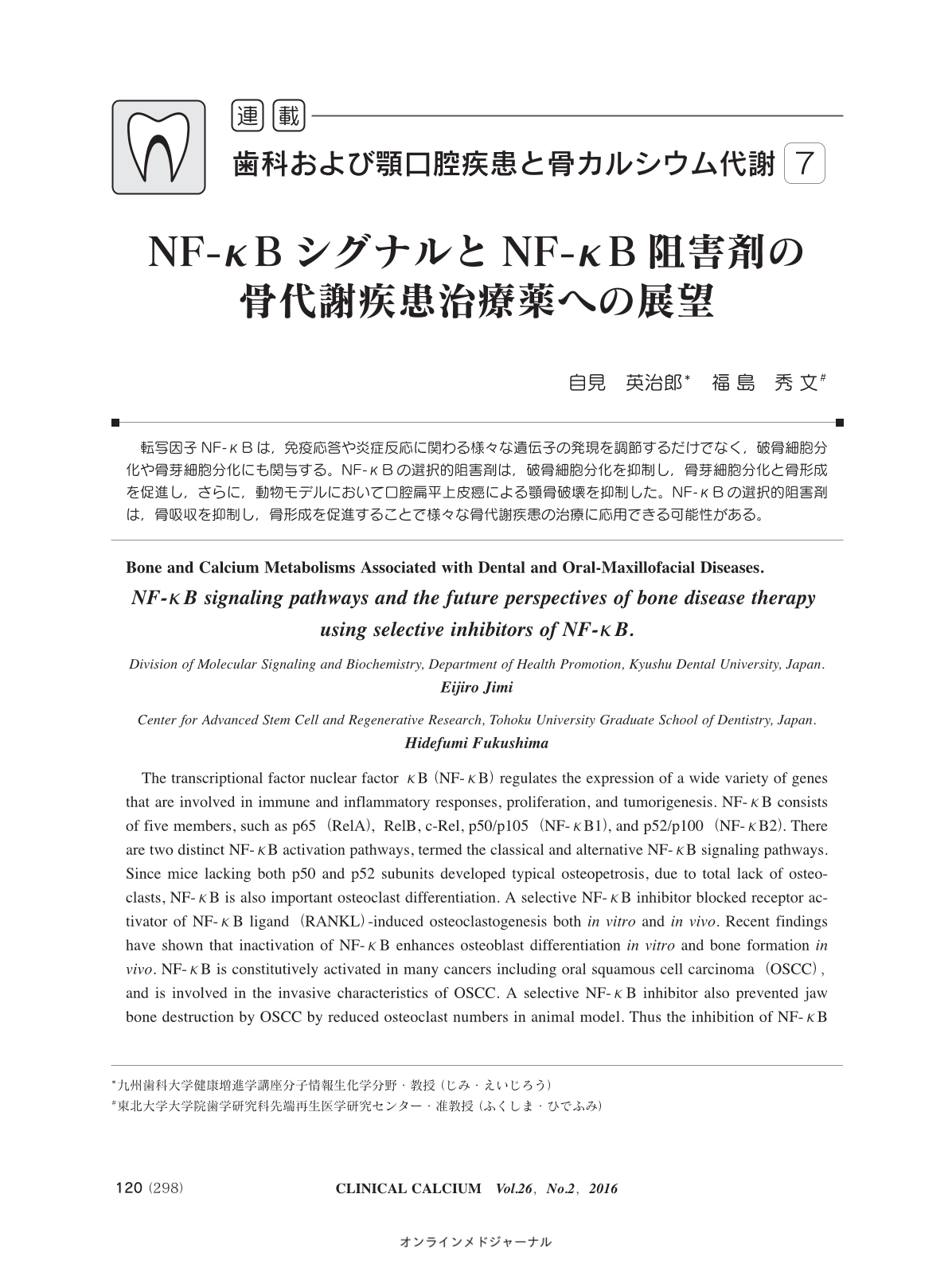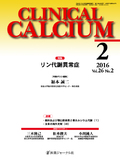Japanese
English
- 有料閲覧
- Abstract 文献概要
- 1ページ目 Look Inside
- 参考文献 Reference
転写因子NF-κBは,免疫応答や炎症反応に関わる様々な遺伝子の発現を調節するだけでなく,破骨細胞分化や骨芽細胞分化にも関与する。NF-κBの選択的阻害剤は,破骨細胞分化を抑制し,骨芽細胞分化と骨形成を促進し,さらに,動物モデルにおいて口腔扁平上皮癌による顎骨破壊を抑制した。NF-κBの選択的阻害剤は,骨吸収を抑制し,骨形成を促進することで様々な骨代謝疾患の治療に応用できる可能性がある。
The transcriptional factor nuclear factor κB(NF-κB)regulates the expression of a wide variety of genes that are involved in immune and inflammatory responses, proliferation, and tumorigenesis. NF-κB consists of five members, such as p65(RelA), RelB, c-Rel, p50/p105(NF-κB1), and p52/p100(NF-κB2). There are two distinct NF-κB activation pathways, termed the classical and alternative NF-κB signaling pathways. Since mice lacking both p50 and p52 subunits developed typical osteopetrosis, due to total lack of osteoclasts, NF-κB is also important osteoclast differentiation. A selective NF-κB inhibitor blocked receptor activator of NF-κB ligand(RANKL)-induced osteoclastogenesis both in vitro and in vivo. Recent findings have shown that inactivation of NF-κB enhances osteoblast differentiation in vitro and bone formation in vivo. NF-κB is constitutively activated in many cancers including oral squamous cell carcinoma(OSCC), and is involved in the invasive characteristics of OSCC. A selective NF-κB inhibitor also prevented jaw bone destruction by OSCC by reduced osteoclast numbers in animal model. Thus the inhibition of NF-κB might useful for the treatment of bone diseases, such as arthritis, osteoporosis, periodontitis, and bone invasion by OSCC by inhibiting bone resorption and by stimulating bone formation.



